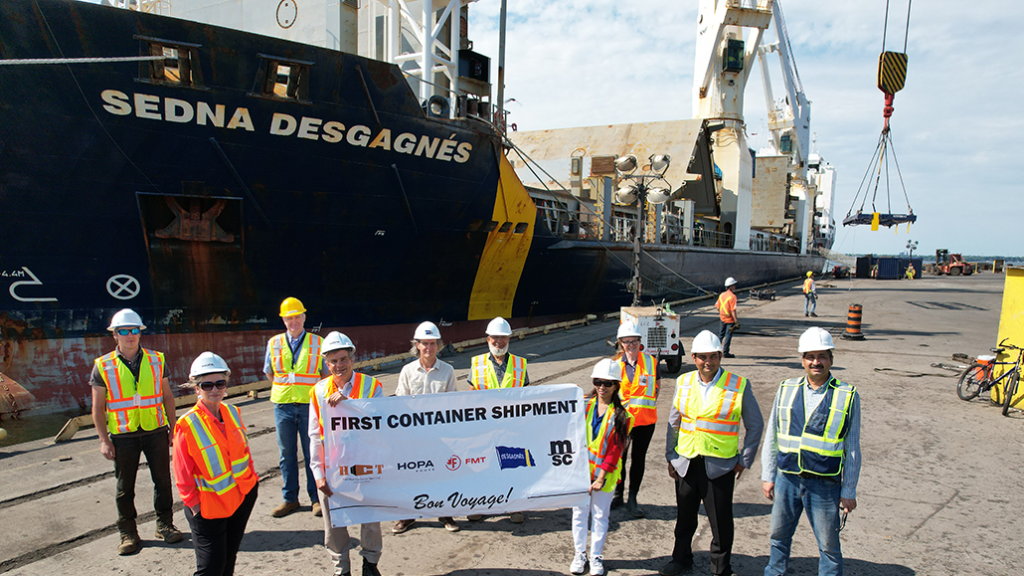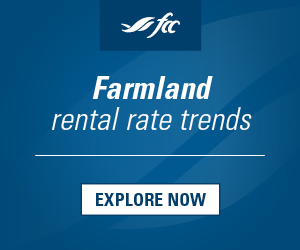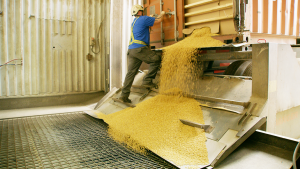New transport option for grains
CONTAINER SHIPPING FROM HAMILTON

A NEW SHORT sea shipping service launched this year by Hamilton Container Terminal, offering city-to-city container shipments. The company will use the Great Lakes as a marine-highway alternative to road-based transportation. The new container shipping service loaded its first 300 containers bound for the Port of Montreal in June, filled with recycled steel, recycled paper, and clothing. And, with four more sailings scheduled between September and December this year, the terminal has set their sights on expanding this new transportation service to ship containers of Ontario grain.
| WHAT YOU NEED TO KNOW • Located in the Port of Hamilton, the Hamilton Container Terminal has set their sights on attracting business from grain farmers and exporters in southwestern Ontario. • This service offers a 500 per cent lower carbon footprint. • Providing buyers with smaller load sizes in shipping containers might be another way to open markets for other high-value commodities such as field peas and lentils. • Plans for the 2022 shipping season, expected to begin when the lakes are open in mid-March, include weekly service between Hamilton and Montreal. Regular container shipping service to Halifax is expected in 2023. |
“If we’ve learned anything from the recent pandemic, it’s the importance of having options to move goods within the supply chain,” says Dana Dickerson, Grain Farmers of Ontario’s manager of Market Development. “This new container shipping is a welcomed option that could increase the total capacity of our grain export system and quite possibly open new opportunities for trading other grains and byproducts.”
Food grade soybeans are currently Ontario’s most popular grain commodity exported by container, with 704,000 tonnes shipped overseas in 2019/2020. Until now, exported grains have been predominantly shipped by bulk vessels, but the new container shipping option opens doors for smaller quantities and the potential for value added products.
“We really don’t know what types of opportunities can be opened by this new container shipping option yet,” says Dickerson.
ADVANTAGES ADD UP
Strategically located in the Port of Hamilton, the Hamilton Container Terminal has set their sights on attracting business from grain farmers and exporters in southwestern Ontario. They are also targeting large importing and exporting businesses in the same area, including foodstuff and beverage, electronics, auto parts, and tires.
“We see grain as a huge opportunity for the container shipping service; and believe this will also provide growers with new prospects for exporting their products, or at the very least a new shipping alternative,” says Sanjeev Saraf, commercial director with the Hamilton Container Terminal.
The container service serves as a new mode of transportation for shipping goods from Hamilton to the Port of Montreal and the open seas beyond.
“For every three containers entering Toronto, only one goes out,” says Saraf, explaining that the short sea shipping service also offers a new opportunity to balance the distribution of shipping containers by filling the containers with product that would otherwise be shipped via rail, truck, or bulk shipping. Shipping full containers will enable the redistribution to other Canadian and international ports.
The biggest advantages of short sea shipping from Hamilton to Montreal or Halifax is the ability to avoid traffic and a reduced carbon footprint. When compared to trucking grain and navigating the more than 10,000 trucks moving products that travel between the Greater Toronto Hamilton Area and Montreal every day, this marine alternative might be pretty appealing, especially if exporters are faced with driver shortages or a lack of available trucks.
And if you are concerned about sustainability and C02 emissions, this service offers a 500 per cent lower carbon footprint.
“The cost savings will be different for everyone and depend on how you compare container shipping to your existing method of transportation,” explains Saraf, noting that he believes the service also offers more convenience and flexibility than rail car transport, with Hamilton Container Terminal offering three to five days to empty the containers after they arrive at their destination and short-term storage options.
NEW EXPORT OPPORTUNITIES
“Any investment in modern logistics is welcome in our industry,” says Russel Hurst, executive director, Ontario Agri Business Association (OABA). “Especially in areas of the value chain that were stressed during the COVID-19 pandemic.”
Hurst also sees the new container shipping service as an opportunity to diversify transportation and increase export opportunities for high-value agricultural commodities. As for penciling out the new marine shipping option, he says OABA expects the long-term trends of fewer drivers and rising trucking costs to continue, making container transportation another viable avenue for shipping.
Canadian grain farmers have been successful in establishing niche, value-added export markets for food grade soybeans. Hurst says the industry can build on that success and that, perhaps, providing buyers with smaller load sizes in shipping containers might be another way to open markets for other high-value commodities such as field peas and lentils.
“There’s always been a high aspiration to develop premium markets for Canadian growers, and if our industry continues to collectively move in this direction containers could be the best way to ship out our goods,” he says.
Dickerson agrees.
“We can expect container shipping to open new opportunities for Ontario grain farmers and create competition in moving goods,” she says. “It’s great to see groups like Hamilton Container Terminal invest in our supply chain, making it more robust for all of us.”
GROWTH PLANS
After this initial launch year, the company’s future plans extend to the Port of Halifax.
“Our goal is to create an economically viable and sustainable all-water service from Hamilton to Halifax and Montreal,” says Saraf.
Plans for the 2022 shipping season, expected to begin when the lakes are open in mid-March, include weekly service between Hamilton and Montreal. Regular container shipping service to Halifax is expected in 2023.
“Our long-term plans extend to twice-weekly shipments to Montreal and weekly to Halifax,” he says. The company has even calculated their extended environmental impact, expecting to save 500,000 tons of C02 over the next 10 years.
To learn more about the service, and future bookings, contact Sanjeev Saraf at sanjeev@hcterminal.com. •











